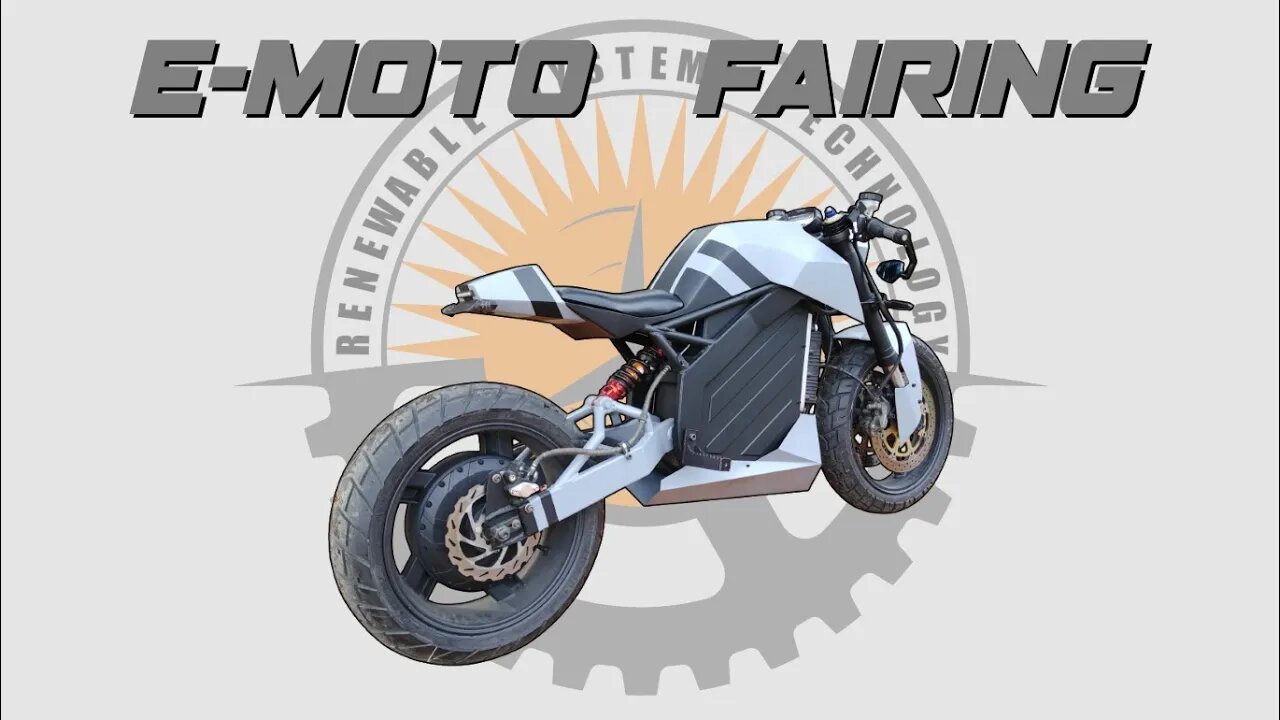Premium Only Content

How To Build An Electric Motorcycle Ep 2: The Fairing
How To Build An Electric Motorcycle. Get the plans: https://renewablesystemstechnology.com/electric-streetfighter.html
In this video I make the fiberglass fairing for the electric streetfighter motorcycle. I carved a plug - basically a full scale model of the fairing - from expanded polystyrene foam, then covered it with a couple of layers of 10 oz fiberglass and 2 part epoxy (note that polyester resin will melt polystyrene). I smoothed out the surface with polyester filler after the epoxy was cured, then sanded and primed with acrylic primer.
I made a silicone mold using the plug and 2 part platinum cure RTV mold silicone. I covered the plug in a thin layer of petroleum jelly to serve as a release agent. Nothing usually sticks to silicone, but sometimes things happen with fresh molds so it's better to be safe than sorry. I then poured 2 thin layers of silicone over the plug and allowed it to cure. Then I used a thickening agent in the silicone to make it more viscous so that I could build up the mold to greater than 1/4" thickness, faster.
Once the silicone molds were cured, I covered those with a thin layer of petroleum jelly and then 4 layers of 10 oz fiberglass and polyester resin to make the 'mother' molds - once cured, these fiberglass molds will provide reinforcement for the silicone molds so they retain their shape. I switched to using polyester resin instead of 2 part epoxy because the cure time is much quicker, and it works better in colder temperatures (winter is coming to Canada).
Once the molds were finished, I attempted to cast the fairing in one shot, but failed. The sides of the fairing mold were so steep that the glass kept collapsing, so I had to resort to splitting the molds into four pieces so the glass would lay in them properly. Once cured, I sanded the parts and then connected them with fiberglass 'tape' and more resin. Then the seams were sanded, puttied, sanded again, primed, puttied and sanded again, primed, then sanded AGAIN, then a couple coats of paint were applied....with sanding between each coat. Yeah, there was a LOT of sanding.
So, why did I do it this way? Why not vac injection instead? Simple - not enough time. As mentioned, cold weather is here and it was making it difficult to get this done without having heat in the workshop. I've used vac injection for other projects in the past, but have learned that it takes some time to work out the bugs and to expect a couple of fails in the process before getting it right. I didn't want to mess around. A little extra elbow grease making simple molds and casts helped me avoid this project potentially carrying on into the new year and costing me more than I can afford. If I were going to mass produce these, then I would have certainly spent the extra time making vac injection molds.
Anyway, if you have any questions just post them below. If you have any criticisms, save it. What's done is done and I have a plan to finish what I started. The best way to put your criticism to practice is to build your own bike.
Brakes, wiring, and seat left to do. Not sure if there will be a part 3 or if I'll just put the rest of the build in the complete build video instead. Either way, this project will be wrapped up in a roughly a week, so keep an eye out for the finished product.
Get the plans for this project here: https://renewablesystemstechnology.com/electric-streetfighter.html
Support RST to ditch the ads and get access to dozens of project plans at no extra cost:
http://www.patreon.com/resystech
https://www.youtube.com/channel/UCtrf6ZiE6hw3k77hGpnuQWg/join
Follow RST on Facebook:
https://www.facebook.com/RenewableSystemsTechnology
-
 23:18
23:18
Crowder Bits
5 hours agoDebunked: John Oliver's Outrageous Lies About Trump 2.0
49.4K30 -
 LIVE
LIVE
Dr Disrespect
1 hour ago🔴LIVE - DR DISRESPECT - TARKOV - ZERO TO HERO PISTOL ONLY
2,225 watching -
 2:00:46
2:00:46
Steven Crowder
4 hours ago🔴 Fight! Major Lawsuit Announcement...
346K182 -
 LIVE
LIVE
The Dana Show with Dana Loesch
50 minutes agoTRUMP AND ELON MUSK DEFEND DOGE | The Dana Show LIVE On Rumble!
618 watching -
 LIVE
LIVE
Grant Stinchfield
1 hour agoThe Heist of Fort Knox That Has NOT Happened Yet
271 watching -
 LIVE
LIVE
The Charlie Kirk Show
54 minutes agoTHE CHARLIE KIRK SHOW IS LIVE 02.19.25
6,550 watching -
 1:00:47
1:00:47
The Dan Bongino Show
3 hours agoWhat Did Zelensky Know? When Did He Know It? (Ep. 2426) - 02/19/2025
466K705 -
 45:27
45:27
Benny Johnson
2 hours ago🚨Kash Patel WINS Critical FBI Director Confirmation Vote as Trump MASS FIRES Deep State Prosecutors
55K36 -
 1:08:01
1:08:01
Timcast
3 hours agoDemocrats PANIC Over Trump Order To "Seize Control" Of Federal Agencies, Trump Asserts FULL Control
106K58 -
 55:32
55:32
MYLUNCHBREAK CHANNEL PAGE
18 hours agoA Little Help From Angels?
41.7K13